Epilogue from Steve Solomon’s Water The Epic Struggle for Wealth, Power, and Civilization
The close of economic journalist Steven Solomon’s book is a reflection on the new meaning of water given today’s scarcity crisis. Solomon connects freshwater’s past and present to paint a future, and potentially very unstable picture of human civilization. By redefining facets of this precious resource, however, he presents the foundation of finding global solutions.
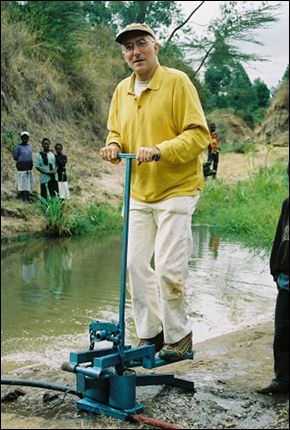
By Steven Solomon
Special to Circle of Blue
Looking back over time brings into relief the close association between breakthrough water innovations and many of the turning points of world history. From about 5,000 to 5,500 years ago, following several millennia of experimentation and development, largescale irrigated agriculture in the arid, flooding river valleys of the Middle East’s Fertile Crescent and the Indus River, and along the Yellow River’s soft loess plateaus, provided the technological and social organizational basis for the start of modern human civilization. During the same period, man began transporting large cargoes on rivers and along seashores in reed and wooden sailing vessels, eventually aided by a steering rudder. Sailing in turn, nurtured the rise of international sea trade and Mediterranean civilizations where indigenous agricultural conditions were relatively poor. Civilization’s slow march through rain-watered, cultivatable lands began in earnest a little under 4,000 years ago with the spread of plow agriculture that allowed more intensive farming over a greater expanse of cropland through the application of animal power.
Mastery of the art of quenching red hot iron in water to make steel weapons and tools about 3,000 years ago made possible construction of qanats and aqueducts, which reliably conveyed enough freshwater to sustain the rise of the great cities that anchored every civilization. The inland expansion of civilization was facilitated by the innovation of transport canals that connected natural waterways, starting in China 2,500 years ago and replicated everywhere with great impact over the centuries from southern France’s seventeenth-century Canal du Midi to America’s nineteenth-century Erie Canal. Some 500 years ago, globaldistance barriers were defeated by Europeans’ momentous discovery of how to sail back and forth across the open oceans; from the midnineteenth century, interoceanic sailing times were compressed by the cutting of great sea canals for new, speedy steamships and gunboats that forged the world order of the colonial age.
Just prior to start of the Christian Era 2,000 years ago the seminal invention of the waterwheel captured the power of flowing water to turn mills to grind man’s daily bread; a thousand years later waterpower was applied with more complex gearing to a widening array of industrial applications and ultimately, a quarter of a millennium ago, to power the first factories. The waterpower barrier was finally shattered by the steam engine in the late eighteenth century—arguably the greatest invention of the last millennium which catalyzed the defining innovations of the Industrial Revolution—and was transcended yet again by hydroelectric power in the late nineteenth century and a panoply of water-assisted power generation inventions in the twentieth century. The sanitary revolution helped foment transformations in human health, demography, and clean drinking water that sustained massive modern industrial urban concentrations. Less than a century ago, 5,000 years after the original big dams of antiquity, history’s first giant, multipurpose dams began harnessing the planet’s great rivers to deliver electricity, irrigation water, and flood control on a massive scale that remade landscapes at a stroke and was vital to launching the worldwide Green Revolution that nourished humanity’s stunning population surge.
Modern industrial technologies also permitted man to mine the earth of water from its deep underground reservoirs as he had drilled oil, and to pump the water unprecedented distances over and beyond mountains in long-distance aqueducts.

By the end of the twentieth century, an ocean fleet of intermodal supercontainers speedily delivering goods ordered from foreign factories from a nearly realtime information web to local markets across the planet served as the transport backbone of the new, integrated global economy.
With each major breakthrough, civilization had been transformed by the conversion of a key water obstacle into a source of greater economic power and political control; invariably its accessible water resources became more productively utilized and more voluminous in absolute supply. Time and again, the world order of the age was recast, elevating societies to preeminence that proved most adept at harnessing the new form of water’s catalytic potency and pushing the laggards toward decline. Today, man has arrived at the threshold of yet a new age. His technological prowess has reached the point that he possesses the power, literally, to alter nature’s resources on a planetary scale, while soaring demand from swelling world population and individual levels of consumption among the newly prospering urgently impel him to use that prowess to extract as much water as he can. The alarming, early result is a worsening depletion of many of Earth’s life-sustaining water ecosystems that, nonetheless, are not keeping pace with the growing global scarcity.
Until now, all history’s water breakthroughs have fallen into four traditional categories of use—domestic needs, economic production, power generation, and transport or strategic advantage. At the dawn of the twenty-first century, civilization faces an imperative fifth category that defines the era’s new water challenge: how to innovate new governing organizations and technical applications that make available sufficient supplies of freshwater for man’s essential purposes in an environmentally sustainable manner and relieves the scarcity of an increasingly thirsty planet. No technological panacea that extracts more renewable water from nature is available or on the near-term horizon to answer the call. Some societies may borrow time by mining Earth’s underground reservoirs or transferring freshwater from river basin to river basin until their total water reserves give out. For others, comprising many hundreds of millions of people, the day of reckoning has already arrived. For everyone sharing the planet, the destiny of human civilization as we know it hinges on the responses to this challenge. History suggests those societies that make big breakthroughs that maximize productive use of their renewable water resources and possibly usher in a turning point in practices and applications are the likeliest to be rewarded with rising economic wealth and international power.
The most obvious, environmentally sustainable large source of freshwater at hand to alleviate the crisis is simply to use the current supplies more efficiently. Tapping them, however, is more difficult than it seems at first glance. For starters, it requires major organizational changes in the way water is managed, politically and economically. Enormous inefficiencies, waste, and political favoritism have been built up in the government command systems that controlled water use in almost every society through the centuries—the true paradox of water is that despite its scarcity, it nearly everywhere remains the most shortsightedly and poorly governed critical resource. Reform can come in one of two main ways: by foresightful, effective, top-down political leadership that uproots its own embedded systems and then makes wise choices about the governing technologies and methods to replace them; or by turning loose the proven reorganizing power of impersonal market forces within a properly regulated, governing framework to winnow out the inefficiencies and redeploy the existing water resources from less to more productive hands.
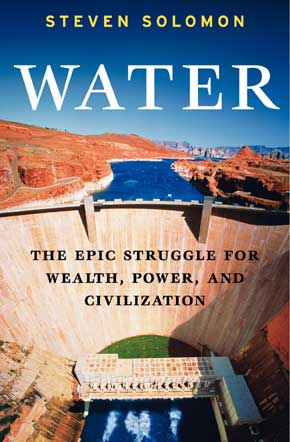
It is, of course, conceivable that uncommon leadership might arise within a handful of governments around the world to implement the necessary internal reforms. Yet judging from history, it seems highly imprudent, even fanciful, to bet that such exceptional leadership will arise across many continents at one time. Better—more pragmatic—odds of success almost surely lie with greater reliance upon the self-interested, profit motive of individuals organized by the politically indifferent market anchored in a pricing mechanism for valuing water that reflects both the full cost of sustaining ecosystems through externally imposed environmental standards and a social fairness guarantee for everyone to receive at affordable cost the minimum amounts necessary for their basic needs. Those uneasy with the market system’s history of yielding widely unequal wealth distribution patterns should be partially heartened by the fact that competitive, free markets’ singular devotion to lucre has on its side the considerable merit of being one of history’s most subversive and undiscriminating enemies of unfairly entrenched privilege and deserves credit as a prodigious creator of the wealth that necessarily precedes any debate about how to make its distribution more equitable.
A second obstacle is that the precondition for any effective organizational innovation, either market-based or government-imposed, is adequate water infrastructure and control for basic delivery, protection against shocks, waste removal, and measurement of use. In vast swathes of the world this precondition is in shocking deficit. The dearth of infrastructure is central, for example, to the deplorable failure to achieve the most elementary, universally sought goal of providing at least 13 gallons, or 50 liters, to meet the minimum basic daily domestic and sanitary needs for each individual. This is a minuscule drop—the equivalent of eight low-flow toilet flushes—that even the water poorest societies have enough supply to provide. Any legitimate government would readily strive to do so. Moreover, many nongovernmental and official international institutions have been trying to assist countries to achieve it and other very basic water needs. Prominent water experts are campaigning for this tiny amount to be recognized as a universal human right to water. Yet it is unachieved for two-fifths of mankind for one overriding, simple reason—the deficit of existing infrastructure and competent, institutional governance.

Finally, there is no one-size-fits-all remedy for the global crisis of water scarcity. Each society’s hydrological reality and challenges, like its political, economic and social conditions, are unique. Some societies have to cope with monsoonal seasonality, others with perennial rainfall, and some with almost none at all. Some entire regions, such as Africa, have scarcely tapped their hydroelectric power development and irrigation water storage potential; while in America and Europe, additional giant damming has mostly yielded environmentally counterproductive and diminishing economic returns. Investing local, mostly poor stakeholders who have historically been dispossessed by large waterworks in the success of a new water project is a paramount challenge in many developing countries but almost nonexistent in leading industrial democracies with responsive governing structures. Some nations’ most urgent need is to resurrect and expand traditional small-scale, low-tech methods for water storage and terracing, while for others it is to apply modern water technologies on a large scale as rapidly as possible.
Pragmatism, not universality or bias of principle, is what is called for: It is, quite frankly, hypocritical and even morally obscene, to witness activists and officials from water-Have nations whose material benefits— albeit often gained with ugly social, economic, and environmental side effects—have been so visibly aggrandized by giant dams to use their international clout to reflexively oppose virtually all similar development in water poor ones. In short, the world water crisis is a multidimensional crisis. It requires myriad responses targeted at each specific layer and situation, much trial and error adaptation of what works elsewhere, vast capital investment in infrastructure, relentless hard work governed by a pragmatic intelligence and a few, flexible guiding principles. The world has no previous model or institutional framework for coping with it. Everything has to be invented on the fly.
Every society in the age of scarcity faces its own particular version of the era’s defining water challenge. How each copes with its challenges, and which societies make the most dynamic breakthroughs, will partly dictate the winners and losers in a century where water’s role is of increasingly paramount importance. History is agnostic as to whether a water rich society is likeliest to seize upon its opportunity to exploit its initial water resource advantage in a dynamic new way or whether its relative comfort instead will make it a complacent onlooker while some water indigent society, driven to innovation by the dire necessity of survival, makes the pathbreaking innovations that unlock a new, hidden aspect of water’s extraordinary, catalytic properties and transforms the obstacle of scarcity into a propellant of expansion toward wealth and possible global leadership. Whether in the end it is a Western liberal democracy, China’s authoritarian, state directed market system, a resurgent totalitarian, command economy state like antiquity’s hydraulic societies and the industrialized twentieth century’s Nazi Germany or Soviet Union, or a nation rising on some other new model, which proves most adept at making the breakthrough responses, will influence the type of governing model that prevails in this round of history’s endlessly shifting contest between political economies.
Throughout history water has been a great uniter and a great divider, a barrier and a conveyance, but always a great transformer of civilization. As history’s most critical natural resource, vital in virtually every aspect of human society, and one that interactively leverages food, energy, climate change, and other grave problems facing a world rising toward 9 billion souls, all striving for first world material standards, water also represents an early proxy test for human civilization’s impending survival challenge of learning how to sustainably manage Earth’s total planetary environment. Geographer Jared Diamond has grimly concluded that, on current trajectories, there are simply not enough planetary environmental resources, including accessible freshwater, to even come close to satisfying the aspirations of several billions to move up
the development ladder to industrial-world levels of consumption and waste. As in previous eras, human population and available environmental resources are again widely out of balance. Famines, genocides, wars, disease, mass migrations, ecological disasters, and untold miseries are history’s remorseless mechanisms for reequilibration. In the end all nations will be buffeted, if not engulfed, by the myriad feedback channels of water crises that originate elsewhere. How much tumult and suffering lies ahead depends in significant measure upon how well mankind manages the total global freshwater crisis on our shared planet. Looking farther ahead, the extraordinary, unique substance that gave life to man and shaped the destiny of human civilizations is still the indispensable, prerequisite stepping-stone to some day transplanting our species beyond Earth’s sphere to colonize other orbs in the solar system.
There is one more special attribute about water that must inform any study of its role in history: The inextricable affinity between water and our own essential humanity—not merely with human life, but with a dignified human life. My visit to Kenya in the summer of 2004 set off a personal alarm of just how dehumanizing and economically crippling the lack of water for basic needs could be. It drove home the mind-numbing inequity that a majority of humanity still struggles to extract its meager material surplus from nature using obsolete and even ancient water technologies. In the semiarid, rural Chyulu Hills in southeast Kenya on the edge of the Great African Rift Valley congeries of otherwise vibrant, culturally robust communities live in literally dirt-poor subsistence for one overriding reason—insufficient freshwater.
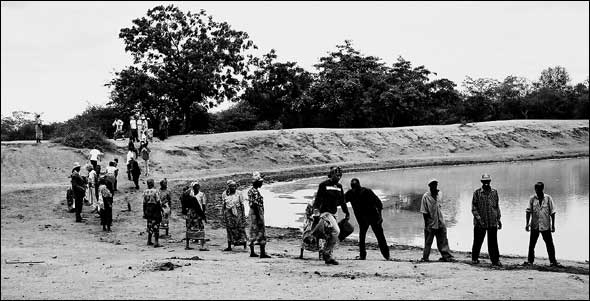
It shocked my sense of common humanity to see the small group of men and women work so tenaciously with hand tools such as picks, shovels, and sisal sacks to perform the backbreaking manual labor of digging and carrying the reddish dirt week after week to reinforce the earthen dam they’d built nineteen years earlier—precisely like those built in ancient times–to trap the seasonal monsoonal rainwater through the dry season so that their cattle can survive, when they and I knew that one-day access to a simple bulldozer could do the job of a whole season, and a few days with a cement mixer could alleviate the task for years. In the nearby Machacos Hills, where low-tech terracing has improved water management and agricultural production, Kenyan farmers step up and down for hours each day on a treadle water pump—much as Chinese rice farmers did using bamboo tubes centuries ago and modern Westerners do at the gym on their exercise StairMasters—to lift water from a muddy creek up the hillside in plastic tubes to fill cans they use to hand water their crops.
More striking still is the ubiquitous sight of large numbers of women and children acting with their feet by marching two to three hours or more per day on dusty roads to fetch clean water from wells or other sources in large, yellow, plastic “jerry” cans, which they carry on their heads, on the ends of poles laid across their shoulders, and packed on bicycles or donkeys. A family of four needs to transport around 200 pounds of water each and every day to meet its most minimal drinking, cooking, and cleaning needs. To manage such an impossible weight, two trips to the well each day by mother and children are not uncommon.
Carrying water for basic subsistence devours school time for children and places a dispiriting burden on the enterprising will of parents to struggle out of their material privation. That the water carrying falls traditionally on women adds the insult of gender inequity to the tragedy. There was genuine rejoicing when the two miles of piping our small, humanitarian group of American volunteers had financed, for a pittance in Western terms, was connected to the well pump and began to deliver water directly to a simple, plastic water tank located in one of the villages.
I will never forget the sense of disempowered injustice we felt when we met a thoughtful young man as enterprising, vivacious, and worthy of a fair opportunity as anyone his age in industrial America, Europe, or Asia who was studying on his own every night, in a home without electric lighting, for a high school equivalency exam on the remote chance that he could qualify for a special scholarship to attend the University of Nairobi; his family was too poor to pay the couple of hundred dollars for his formal high school education, and I knew that had the water pipes we financed arrived years earlier and been put to productive economic use for modest, gravity-fed irrigation as well as drinking and cleaning, this young man might well have gotten the professional chance he deserved and which my own daughters take for granted. His country would also have gained important human capital in its struggle for development. In Ethiopia, where my wife, a high school teacher, traveled in the summer of 2008, the situation was similar, and the poverty even more desperate.
When she arrived in the beautiful, remote mountain highlands that provide the headwaters of the Blue Nile, she felt as if she had been dropped back into medieval times as she saw farmers scratching out meager livelihoods with oxen-pulled wooden plows.
As recently as the 1950s in early postwar France, my Bretagne mother-in-law was still washing clothes with river water and carrying upstairs water buckets of captured rainwater with which to bathe her children and cook the family’s food. It further illustrates how much water history was everywhere a layered history: Ancient, medieval, and modern methods always coexist; yet, crucially, it is an unevenly layered history, imparting enormous—and easily overlooked—advantages to the comfortable water Haves and crippling disadvantages, starting with a life handicapped by malnutrition, ill health, and sacrifice of education to the daily search for water, to the world’s water Have-Nots. The need for water trumps every human principle, social bond, and ideology.
It is literally indispensable. With extreme water scarcity showing through as a root cause of many of the world’s famines, genocides, diseases, and failing states, I am inclined to believe that if there can be a meaningful human right to any material thing, surely it starts with access to minimum clean freshwater.
At the end of the day, how each member of the world community ultimately acts in response to the global freshwater crisis is not just a matter of economic and political history, but a judgment on our own humanity—and the ultimate fate of human civilization. As one scientist succinctly put it: “After all, we are water.”
Economic journalist Steven Solomon has written for numerous publications, including The New York Times, BusinessWeek, The Economist, Forbes, and Esquire. Solomon has also written The Confidence Game, which examined the new role of central bankers in contemporary economies. Read more of Solomon’s work on water here and here.
Circle of Blue provides relevant, reliable, and actionable on-the-ground information about the world’s resource crises.


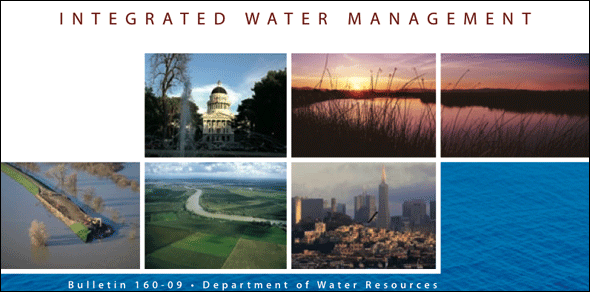

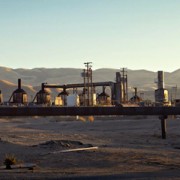






Why wait 10 minutes to email another story. I have limited time to review materials when preparing to teach my classes in communication. This wait causes me to leave your site and not share valuable information with my students.
Thank you for pointing out this excessively long delay. I have set the delay to one minute. This, I hope, will be an acceptable time frame to avoid abuse by spammers and allow for well-intentioned use.
steven, this essay should be required reading in every history profs
course. without a doubt, this is the issue of our time.
great read.
sincerely
bob brouse
water.ca
Fascinating topic, combining the need for ethical consumption and a form of renewed Malthusianism. Stewart Burn discusses in a recent essay (http://www.futureagenda.org/?cat=3) the challenges posed when 6 billion people share the same volume of water than 1.6 bn did a century ago. He proposes some solutions: individual measure of water consumption, development of “water sensitive cities”, forward planning and increased international solidarity. Here also lies the future of water.
dear sir/madam
i am from Ethiopia,looking for you interest of study like water and environmental conservation in M.A OR M.Sc in 2010/11.i am looking for a scholar ships of the above mentioned areas.if not please,let me award me like sociology or law or political science or any related fields.please,remember me.
with kind regards.
Having been raised in the Central Valley and living in San Francisco both of which rely on sierra snow packs, I am acutely sensitive to the issue of decreases in water availability in recent years. Are there technological advances beyond planting less water hungry crops that have been used in countries like Israel and Australia that could be adopted for problems, particularly in California?